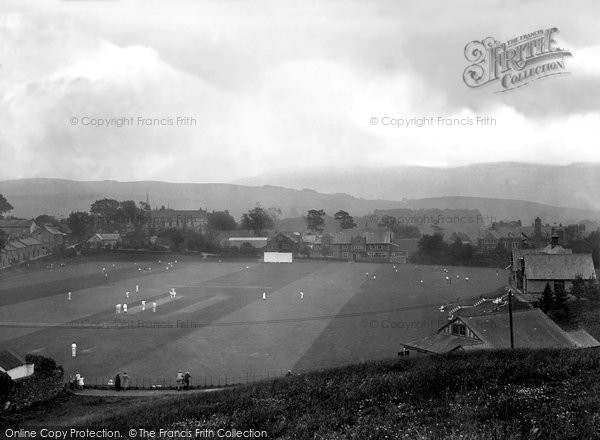
'...Of course, I wanted to call it Statistical Breakdown, but that seems too punning, too dismissive... but sometimes I do still like it, and go to screenings of Tom... and shout out 'I should have called it Statistical Breakdown!' over the credits.' Barry Bishopsfield
Along with Tony Richardson, Lindsay Anderson Karel Reisz et al, Barry Bishopsfield was part of the Free Cinema movement of the early sixties. By the time of Tom The Scorer, however, he had moved away from a quasi-realist style and towards something completely his own. For while his visual grammar and subject matter may have had much in common with his peers, Bishopsfield consistently began to breach the Fourth Wall by including himself in his work. Often, his directions to actors can be heard on the finished film, and sometimes scenes are broken by actors forgetting a line, stopping and then beginning the scene from the beginning. So far, so Godard. But Bishopsfield developed idiosyncrasies all of his own: Tom The Scorer is overlaid with an audio track of his own thoughts, weary judgments made in post-production about the shortcomings of his fare. This approach is remarkably similar to the commentaries offered on modern DVDs, in which the director and/or stars of the films will talk over the film. Of course, on the DVD, this is a largely ignored optional extra, and not an integral part of the art; but it came to be central to Bishopsfield's films. And of course, on the DVD, we have a relaxed, wry director making gags and giving us unnecessary technical details; In Tom The Scorer, we hear a panicky Bishopsfield despairing about his vision falling apart before his eyes, and his anger at the confusion in his head being all but impossible to recreate on film ties in with the subject of the film: The titular Tom is a boy who is so obsessed with noting down the goings-on around him that he retreats into a near-autistic inner world of ever-growing data.
Bishopsfield interrupts again with some statistics:
The film is 73 mins and 32.21 seconds. This is 4412.21 seconds. The film has 490 shots. The longest shot lasts for 12.43 seconds (The whirling pan when Tom is confronted by the big city).
Of the 490 shots, 201 are stationary. The other 289 involve camera movements. Number of people that appear on screen: 164. Number of people that speak: 17. Number of people that tell Tom that he needs to 'stop writing in that bloody book': 7. Number of words Tom speaks: 121. Number of words Tom speaks inside his head: 1207. Most common word: 'I' (heard 97 times). Number of times Tom writes something down in his notebook: 54. Number of minutes Tom is on-screen: 42 mins and 56.21 seconds. Amount of perspiration: immeasurable. Gallons. He found himself wondering. He liked the cinema, but he wondered how many times he had been.

Problems come when Tom's obsessive scoring holds up the game, and the crowd boo him. Bishopsfield's insertions mirror Tom's: Both want the perfect sequence of events recorded perfectly, but both find that their study overwhelms their respective subjects. When the ball is hit in Tom's direction, he hides it, all the better to give himself precious seconds to catch up. Similarly, Bishopsfield begins stopping the film at many points to explain. But this didn't prove to be enough for the director. After the film was released, to mixed reviews and general confusion, Bishopsfield took to turning up at showings of his film, carrying with him a large piece of cardboard with which to cover portions of the screen at particular points. He would also comment on his own commentaries, creating a loop of directorial uncertainty that echoed long after the final credits. Cinema-goers in Morden, Brixton and Wimbledon were especially likely to have their already over-directed fare interrupted by the director himself. In 2001, The Curzon in Soho had a special showing of the film, to which they invited Bishopsfield to recreate some of his interruptions. He sat quietly through the whole film.
It wasn't Mark Twain that said that, as I incorrectly guessed on the soundtrack. Oh no, I cannot attribute it. There is another quote that I can correctly assign to GK Chesterton, however, that goes like this: 'The fatal metaphor of progress, which means leaving things behind us, has utterly obscured the real idea of growth, which means leaving things inside us.' I disagree of course, and hope to leave nothing inside me by completely expelling all energies, true or false, into the public air.
Tom The Scorer Directed by Barry Bishopsfield Produced by Barry Bishopsfield, Karel Reisz Written by Tom Warne, Barry Bishopsfield Starring Benjamin Tot, Roger Livesey Bryanston Films/ Continental Films 87 mins Release Date UK: June 1963 US: Aug 1964 Tagline:What Is The Score?





No comments:
Post a Comment